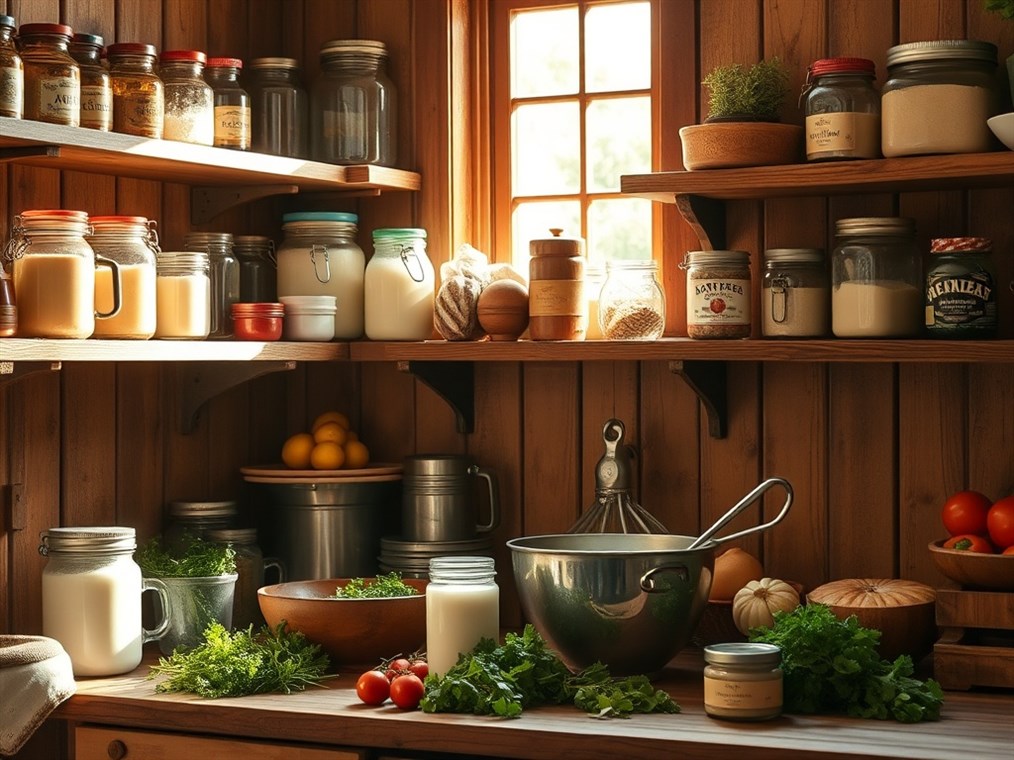Non-Fat Buttermilk: More Than Just a Low-Fat Dairy Drink
Buttermilk. The name itself conjures up images of old-fashioned kitchens and down-home cooking. But what is non-fat buttermilk, really? It’s not just some watered-down version of the real deal. It’s a tangy, versatile ingredient that can add a special something to your recipes without piling on the fat. Let’s dive in, shall we?
What’s the Story with Non-Fat Buttermilk?
Okay, so traditionally, buttermilk was literally what was left over after making butter from cultured cream. Think of it – you’re churning away, separating the butterfat, and what’s left? That’s your buttermilk! Naturally, it was pretty low in fat because most of it ended up in the butter. These days, though, things are a little different, especially when we’re talking about the non-fat kind.
Modern non-fat buttermilk? It’s usually made by adding those amazing little guys – lactic acid bacteria – to skim milk. These bacteria are the key! They munch on the milk sugar (lactose), producing lactic acid. This is what gives buttermilk that signature tang and thickens it up. Sometimes, they even toss in Leuconostoc citrovorum (try saying that five times fast!) to really amp up that buttery flavor. Clever, right?
How They Make It: A Peek Behind the Curtain
The process is actually pretty straightforward:
- First, they pasteurize the skim milk. This is just to get rid of any unwanted bacteria. Safety first!
- Then comes the inoculation. They add those friendly lactic acid bacteria, like Lactococcus lactis, to the milk.
- Next, the magic happens: fermentation! The bacteria get to work, turning lactose into lactic acid. This takes a few hours, so patience is key.
- Cooling time! Once it’s reached the right tang and thickness, they cool it down to stop the fermentation.
- Finally, packaging and off it goes! Ready for you to grab it at the store.
The Good Stuff: Nutrition Facts
Don’t let the “non-fat” part fool you. This stuff is still packed with goodness! A cup of non-fat buttermilk gives you:
- Calories: Around 90
- Fat: Nada. Zero grams.
- Protein: A solid 8 grams
- Carbs: 13 grams
- Calcium: A whopping 300mg!
- Vitamin D: A good dose to keep you going
Basically, it’s a great source of protein, calcium, and vitamin D, plus a bunch of other good stuff like riboflavin and vitamin B12. Not bad for something so low in fat, eh?
Unleash the Buttermilk: How to Use It
This is where the fun begins! Non-fat buttermilk is a workhorse in the kitchen:
- Baking: This is where it really shines. That tang reacts with baking soda to create the lightest, most tender biscuits, pancakes, cakes…you name it! It adds moisture and a subtle flavor that’s just irresistible.
- Marinades: Forget tough meat! Buttermilk tenderizes like a champ and adds a delicious tang.
- Dressings and Dips: Want a creamy dressing without the guilt? Buttermilk to the rescue!
- Drinks: Yep, some people drink it straight! It’s refreshing and full of probiotics.
- Soups and Sauces: Adds a creamy touch without all the fat.
- Watching Your Waistline?: It can be a satisfying part of a calorie-conscious diet.
Health Perks: More Than Just a Tasty Treat
Okay, so it tastes good, but is it actually good for you? Turns out, it is!
- Happy Gut: Those probiotics are great for your digestion.
- Strong Bones: All that calcium keeps your bones happy and healthy.
- Heart Health: Some studies suggest it might help lower cholesterol.
- Blood Pressure: Could potentially help keep it in check.
- Energy Boost: Thanks to the riboflavin, it helps your body produce energy.
- Hydration: It’s mostly water and has electrolytes, so it’s a good way to stay hydrated.
No Buttermilk? No Problem!
Out of buttermilk? Don’t panic! You can whip up a quick substitute:
- The Lemon/Vinegar Trick: Add a tablespoon of lemon juice or vinegar to a cup of skim milk. Let it sit for a few minutes until it looks a little curdled.
- The Yogurt Hack: Mix a couple of tablespoons of skim milk with plain, non-fat yogurt to make a cup.
The Bottom Line
Non-fat buttermilk is way more than just a low-fat dairy product. It’s a tangy, versatile, and nutritious ingredient that deserves a spot in your fridge. So go ahead, grab a carton and get cooking! You might just be surprised at how much you love it.

